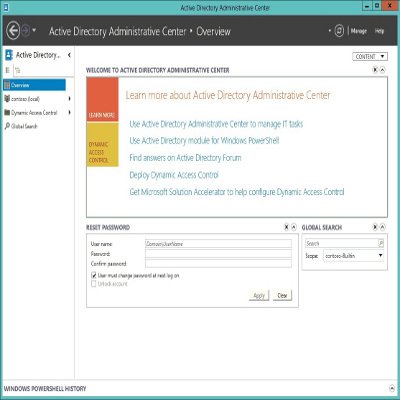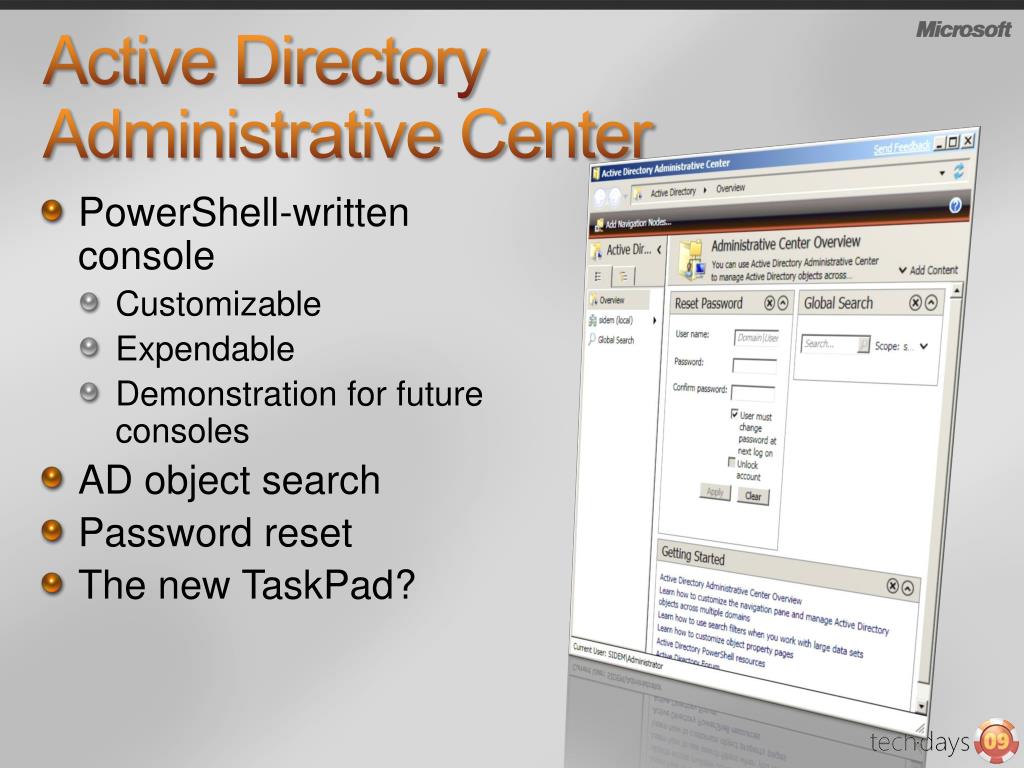
This division of labor between the ADAC and Windows PowerShell meant that administrators who were unfamiliar with Windows PowerShell were placed at a significant disadvantage. However, you still had to choose between using the ADAC to manually perform tasks one at a time using Windows PowerShell to perform tasks from the command line or automating them with the use of scripts. Second, Microsoft included an Active Directory module for Windows PowerShell that allowed administrators to perform many management tasks from the command-line or, even better, write scripts that could be used to automate repetitive tasks. Some third-party vendors had products that were great for automating Active Directory management but required administrators to shell out extra bucks to use them.īut starting with Windows Server 2008 R2, automating Active Directory management got a whole lot easier in two ways.įirst, Microsoft introduced a new Active Directory Administrative Center (ADAC) as the go-to tool for performing the daily tasks of Active Directory administration. Command-line utilities such as ldifde and dsadd could be used to automate a number of common administrative tasks, but the syntax varied greatly among different tools. The MMC snap-ins were easy to use for one-off manual tasks but cumbersome for repetitive tasks. Prior to Windows Server 2008 R2, most Active Directory management was performed using several different Microsoft Management Console (MMC) snap-ins, a variety of different command-line utilities, third-party Active Directory management products or some combination of the above. Larger businesses have to deal with even more Active Directory administration tasks, including creating and populating organizational units (OUs) with users and computer accounts, delegating control over OUs so others can manage their objects, configuring sites and site links in distributed WAN environments and so on.

User accounts need to be created and configured, passwords need to be reset and group memberships need to be updated over time.

Businesses both large and small use it, with the possible exception of very small businesses, such as home-based enterprises, that may simply deploy Windows computers as a workgroup.Įven if your business has only 50 to 100 users, managing Active Directory can mean plenty of tedious, repetitive work. Active Directory is the foundation on which most Windows-based networks are built.


 0 kommentar(er)
0 kommentar(er)
